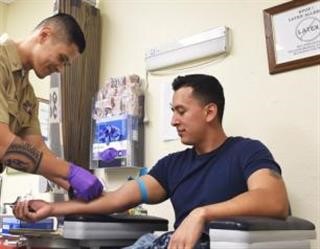The Infertility Organization
Infertility Treatments Risks
We are the complete source for total information and resources for Infertility Treatments Risks online.
Fertility: assessment and treatment for people with fertility problems. Poor egg quality: Eggs that are damaged or develop genetic abnormalities cannot sustain a pregnancy. First Fallopian Tube-Ovary Transplant Carried Out. (PDF, 2 MB) Welcome Trends in Ob/Gyn, 1985. A systematic review of tests predicting ovarian reserve and IVF outcome. 6,28 Additionally, postcoital testing of cervical mucus is no longer recommended because it does not affect clinical management or predict the inability to conceive. Microsurgery Successful in Vasectomy Reversals. (PDF, 156 KB) The New York Times, 1975.
Vasectomy and Vasectomy Reversal. (PDF, 7 MB) Fertility and Sterility, 1978. 5-5 mL, and the WHO lower reference limit (5th percentile) is 1. Infertility tests for men The doctor will ask the man about his medical history, medications, and sexual habits and carry out a physical examination. The doctor or WHNP may also be able to suggest lifestyle changes to increase the chances of conceiving.[65] Women over the age of 35 should see their physician or WHNP after six months as fertility tests can take some time to complete, and age may affect the treatment options that are open in that case. Debate over whether health insurance companies (e.g. in the US) should be required to cover infertility treatment. If the woman is over the age of 35 years old, she may be infertile if she has not become pregnant after 6 months of trying.
Right here are Some More Resources on Infertility Treatments Risks

A lot more Resources For Infertility Treatments Risks
In the United States, around 10 percent of women aged 15 to 44 years are estimated to have difficulty conceiving or staying pregnant. Some causes, such as hyperprolactinemia, are reversible with proper treatment. 8 Evaluation of Men Jump to section + Causes of male infertility include infection, injury, toxin exposures, anatomic variances, chromosomal abnormalities, systemic diseases, and sperm antibodies. Tumors Cancers and nonmalignant tumors can affect the male reproductive organs directly, through the glands that release hormones related to reproduction, such as the pituitary gland, or through unknown causes.
Below are Some More Resources on Infertility Treatments Risks
47 Motivational interviewing techniques for modifiable risk factors, such as obesity, tobacco, illicit drugs, and alcohol, can decrease the targeted risk factor. Transplantation of Rat Kidneys with Acute Tubular Necrosis into Salt-loaded and Normal Recipients. (PDF, 2 MB)Surgery, 1975. Chemotherapy: Some types may significantly reduce sperm count. Dealing with Fertility Problems After Vasectomy Reversal. (PDF, 7 MB) Contemporary OB/GYN, 1978.
Below are Some More Resources on Infertility and Counselling
Surgery for hydrosalpinges before in-vitro fertilization treatment: Laparoscopic salpingectomy or disconnection of both tubes improve IVF/ICSI success rates. Patients with severe ovarian hyperstimulation syndrome are often hospitalized and confined to bed, with strict control of fluid intake and output. Seminal vesicle aspiration revealing numerous sperm or a dynamic test such as injection of indigo carmine into the seminal vesicle or ejaculatory duct may be necessary for diagnosis.[31] Ejaculation issues Anejaculation/retrograde ejaculation may be due to an open bladder neck or a lack of rhythmic contractions during ejaculation.Causes of Infertility A problem in any one of a number of key processes can result in infertility. Surgical treatment of myomas is indicated in cases of abnormal uterine bleeding, when the myoma is implicated in recurrent miscarriages or when it is thought to interfere with embryo implantation. The eggs may never be released or they may only be released in some cycles. It has been proven useful in overcoming infertility conditions, such as blocked or damaged tubes, endometriosis, repeated IUI failure, unexplained infertility, poor ovarian reserve, poor or even nil sperm count. Intracytoplasmic Sperm Injection Today: A Personal Review. (PDF, 5 MB) Human Reproduction, 1998.
Previous Next
See also
Michael Scott Infertility Gifs
Financing for Infertility Treatment
Stories of Infertility